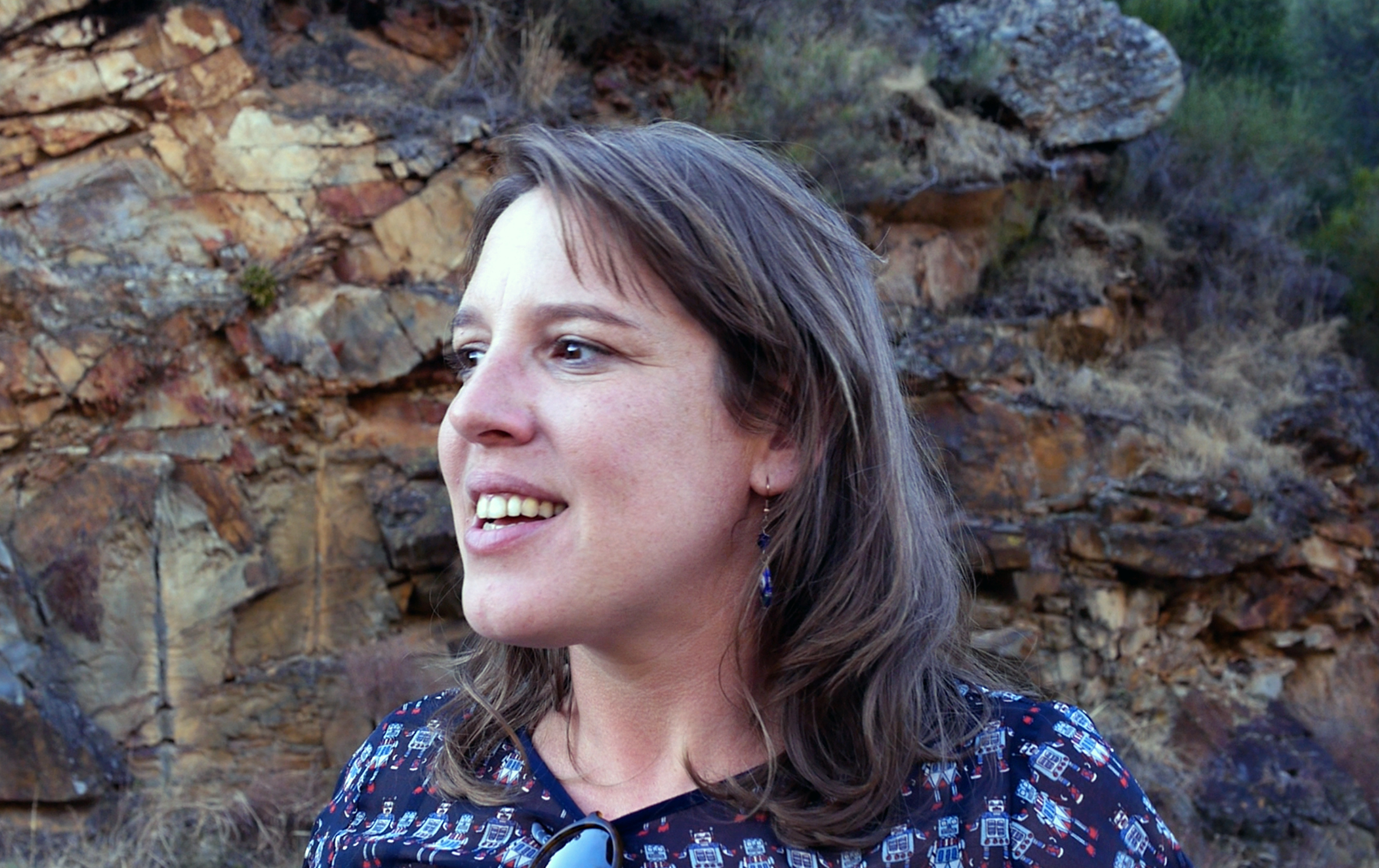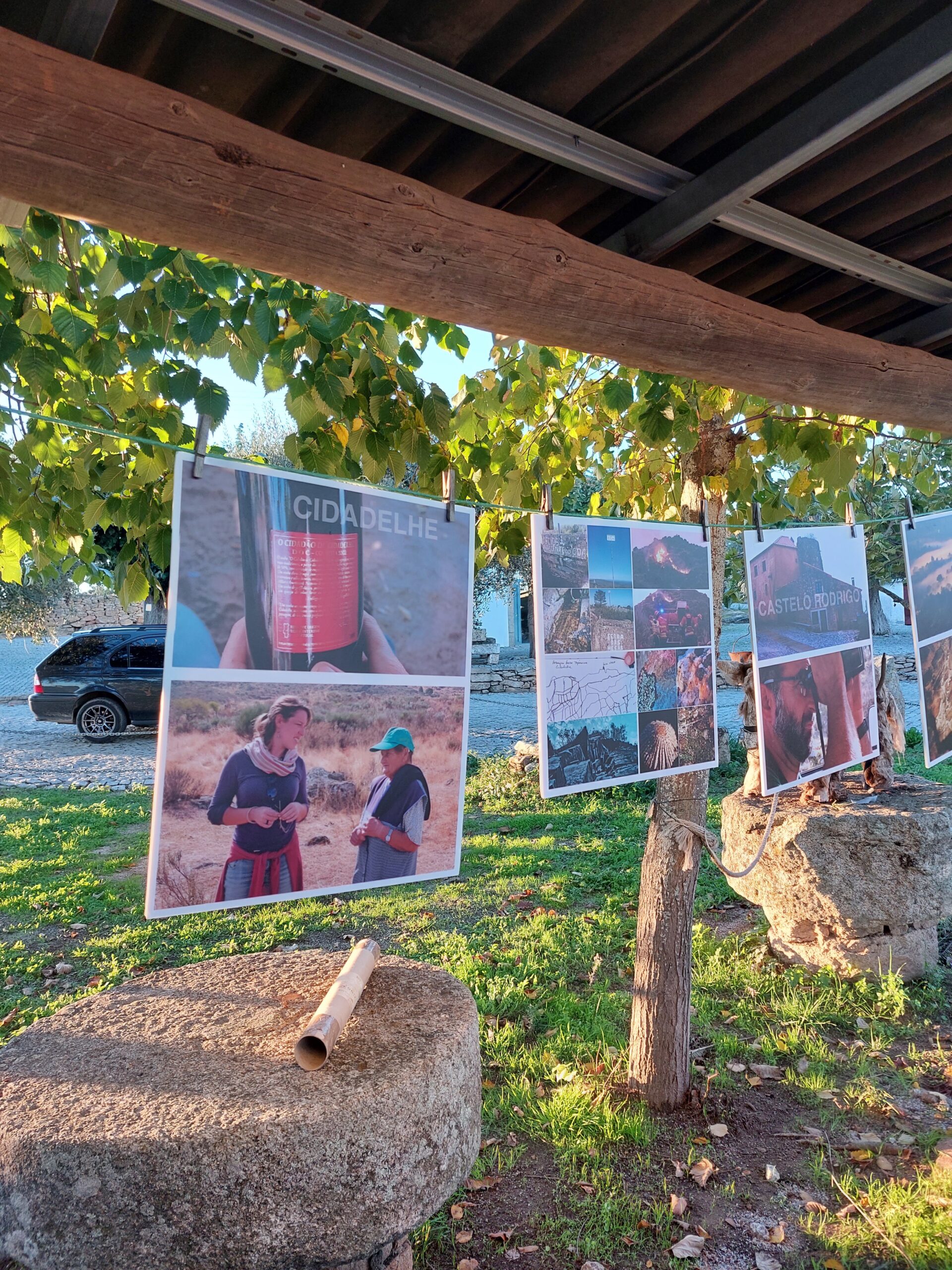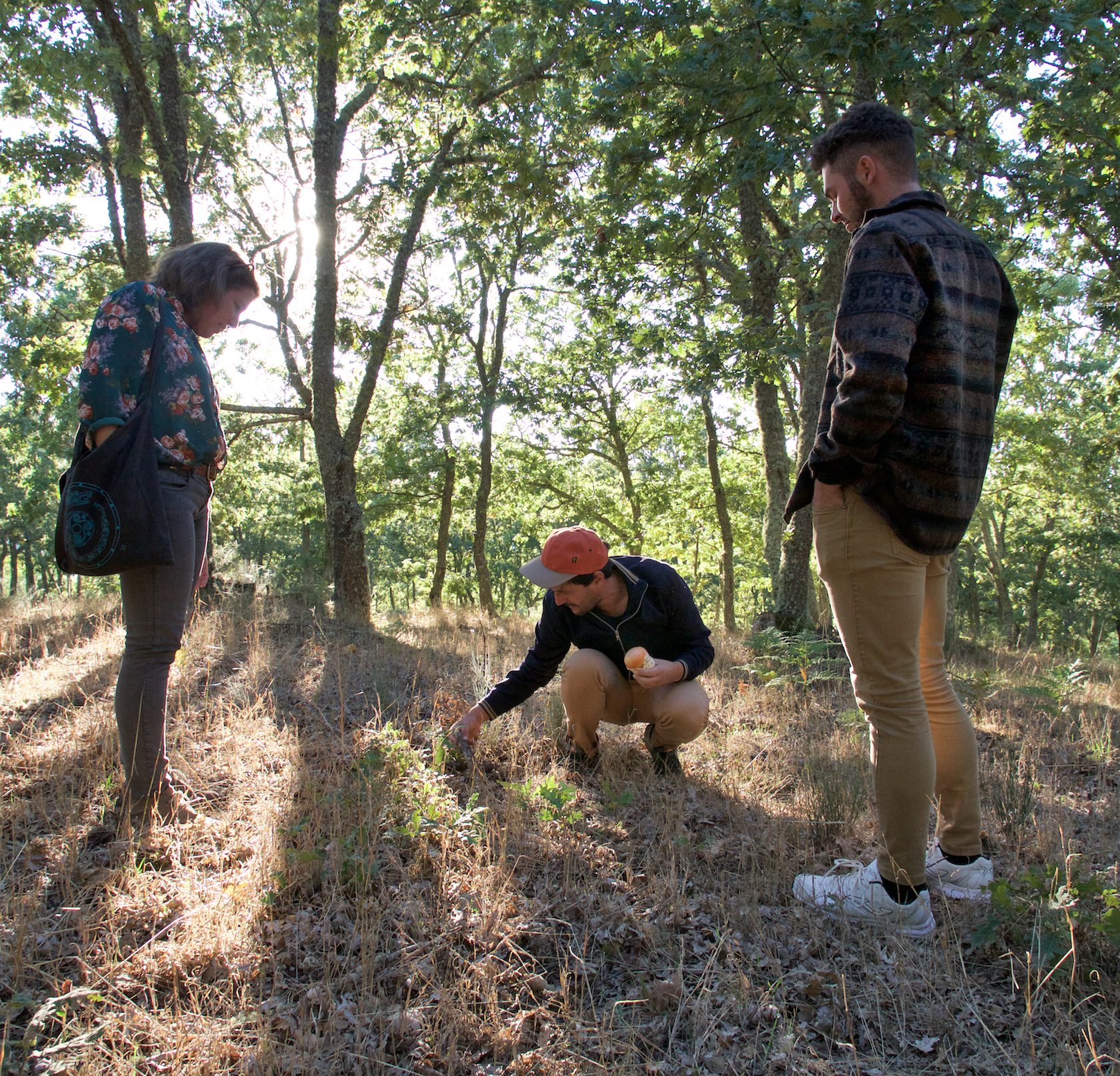Bárbara Carvalho is one of the faces of the Wild Côa Symphony project, a collaborative artistic project that won a competition from the Endangered Landscapes Programme to carry out an artistic residency in the Greater Côa Valley. This interview was carried out in the beginning of this year, and the project is at its final stage and the first results were already presented to the public.

What is the Wild Côa Symphony, and where did the idea for this artistic residency in the Greater Côa Valley come from?
The Wild Côa Symphony is a collaborative artistic project, where three people with very different life stories meet and set out on a journey through the meanders of the Côa River. Me, as a guide, archaeologist and person who is also an element of this landscape, eco-artist Antony Lyons and musician-composer Jesse D. Vernon. It is a drifting journey, from the source to the mouth, in the exploration and recording of sounds, reflections, voices and music, which aims to create a poetic film-portrait of the Great Côa Valley. I’ve known Antony since his first incursions along the Côa, at each meeting, the river and the people who inhabit it were always our commonplace and we had a deep desire to find a way to share this place with the rest of the world. The artistic residency, promoted by the ELP (Endangered Landscapes Programme), with the support of Rewilding Portugal, turned out to be the lever for the realization of this wish. Our journey, portrayed on film, contemplates the various multisensory geographies of a landscape, where all things and those who inhabit and participate in it are the past, present and future of this territory.
What were the main activities you organized during the residency, and how was the experience?
The residency took place over a year, divided into four expeditions, between the autumn of 2021 and 2022. The initial idea was mainly to collect sounds and images of the landscape, having as background reflections, the lived and the wild, freedom, caring, sustainability and coexistence of elements. Meanwhile, the journey was increasingly converging towards meeting communities, we wanted to explore the feeling of belonging and do something that would bring a certain cultural revitalization to the places that map this symphony. Last spring, we organized activities in Vilar Maior, Cidadelhe and Pinhel. With the community of Vilar Maior and Rewilding Portugal, a sound walk through the paths of Vale Carapito was organized, entitled “Deep Time”. The challenge was to look, share and echo past sounds and memories around the biodiversity of this valley. In Cidadelhe, a concert day was held with the local “fado singers”. Poems tuned to the guitar were exchanged, we listened to local hymns and popular songs praised by the women who once sang together while working the land. With the students of Escola Básica 2 de Pinhel, we carried out two sound and musical experimentation workshops, based on the sounds of animals and the wind. It was an incredible experience, beautiful but above all, full of generosity. The shared moments enriched us all and the work of the Wild Côa Symphony itself.

When will we be able to see the residency results in Portugal, and where?
In November 2022, in Castelo Rodrigo, at Cantinho Café, we presented the first excerpts of the film to a small audience. In the last months, Antony Lyons and Jesse D. Vernon were working on the film’s sound composition and final editing. We launched the finished piece in July, in the CÔA – Corridor of Arts festival, in various locations in the Greater Côa Valley.
You work in archeology in this region, can you talk a little about your work in this area and what lessons can we learn from the past?
I came to this territory as an archeology student over 20 years ago. The Alto Douro and Côa were unavoidable regions for anyone wanting to investigate the oldest places in human history. Large protected natural areas, the largest open-air Palaeolithic art site and the most emblematic prehistoric walled enclosures. It was where I had to be, and I ended up staying. Since then, I have been working as a researcher and freelancer with several research projects linked to archeology, in the study and excavation of archaeological sites, in their dissemination and public mediation, but also linked to cultural heritage, in the most general sense, as is the case of the Archive of Memory, a project developed by the Associação de Amigos do Parque and Côa Museum, which has open access to a huge repository of oral testimonies, which tell the most recent history of the region. The Greater Côa Valley holds, in all its tangible and inaccessible layers, from the oldest to the most recent, an immeasurable heritage value that goes beyond all the physical borders of this bioregion. It is also a value that requires great commitment. Knowing the past taught me above all to persist, I think it instigates and teaches us to look at our existence in its various facets and dimensions, to see what is around, in context, in the sense of a journey made and others, which we can still do. For this very reason, research, in whatever area, is for me one of the great pillars of sustainability in this territory.
What would you like to see happen in the Greater Côa Valley in the future?
It’s hard to answer…so many things! Things that last and transform, things that ground us and make us stay, but above all, I would like to see people willing to make things happen. Thinking about the near future and about something that brings together many of these things, and which will certainly happen, the Côa – Corridor of Arts festival!
